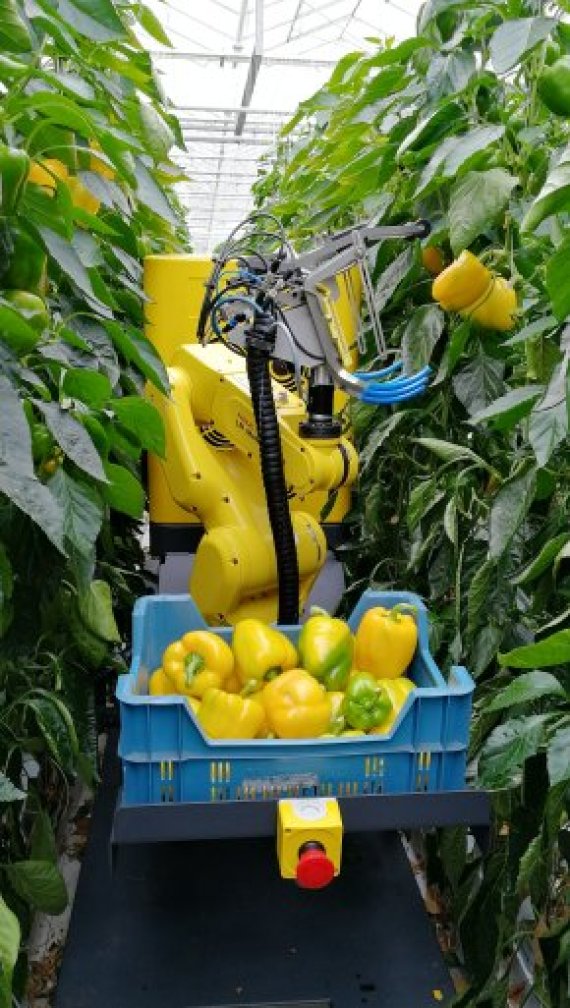© WUR
European agriculture wants to produce more with fewer resources, the European Commission states, and so the EU wants to digitise the agri-food sector. Precision agriculture should lead to diminished use of fertilisers and pesticides, and robots should remedy the labour shortages in agriculture and horticulture. The agROBOfood programme will start this year, but how will it contribute to goal? By linking knowledge institutions and innovation hubs, says project leader Janneke de Kramer. As she has found a new position, WUR colleague Kees Lokhorst is taking over the coordination of this European project this month.
Final step
AgROBOfood is not a research project, De Kramer emphasises. The aim is to organise a network of knowledge institutions and companies that will help each other to speed up the use of robotics in agriculture and horticulture. Take the cucumber picking robot, for example. A prototype is now ready. The question is: which European regions will want to introduce this robot? How does one finance the production facilities, and how should such a picking robot be marketed? ‘We have one final step left to take to make the picking robot commercially attractive’, Lokhorst says. ‘It requires the robot to pick faster and find a higher percentage of cucumbers. But it will also need an international sales market. Product innovation and market development always go hand in hand.’
Safety
Many robots have already been introduced in agriculture and horticulture, like the milking robot and robots that take care of pot plants. ‘In the case of those robots, the animals and plants move or are moved to the robot. What we are working on now are moving robots that go to the plants and animals. These will need to satisfy additional design requirements, such as a more accurate recognition and higher safety requirements. Robotised hoes already exist, but there’s still a farmer on the machine to keep everything in check. ‘The hoe drives in open fields, where it could encounter toddlers or dogs, this means that very strict rules apply to it’, Lokhorst says.
Orchards
The project is also investigating adjustments to crops to make better use of robots. For example, diagonally grown trees in apple orchards, which would allow the apples to be picked more easily by robots from a two-dimensional plane. The robot developers in agriculture will learn from their colleagues who develop robots in healthcare, infrastructure (think of robots that maintain power lines, dikes or bridges) and the smart industries. In addition to Wageningen, the Eindhoven and Delft Universities of Technology also participate in the project. Startlife, which supports young knowledge companies, is also a participant. The network wants to help find investors for start-ups and test locations around Europe.
What about robotics research? ‘We are setting up the European robotics network’, says De Kramer. ‘Participants will be able to submit research proposals to the EU from within the network.’

